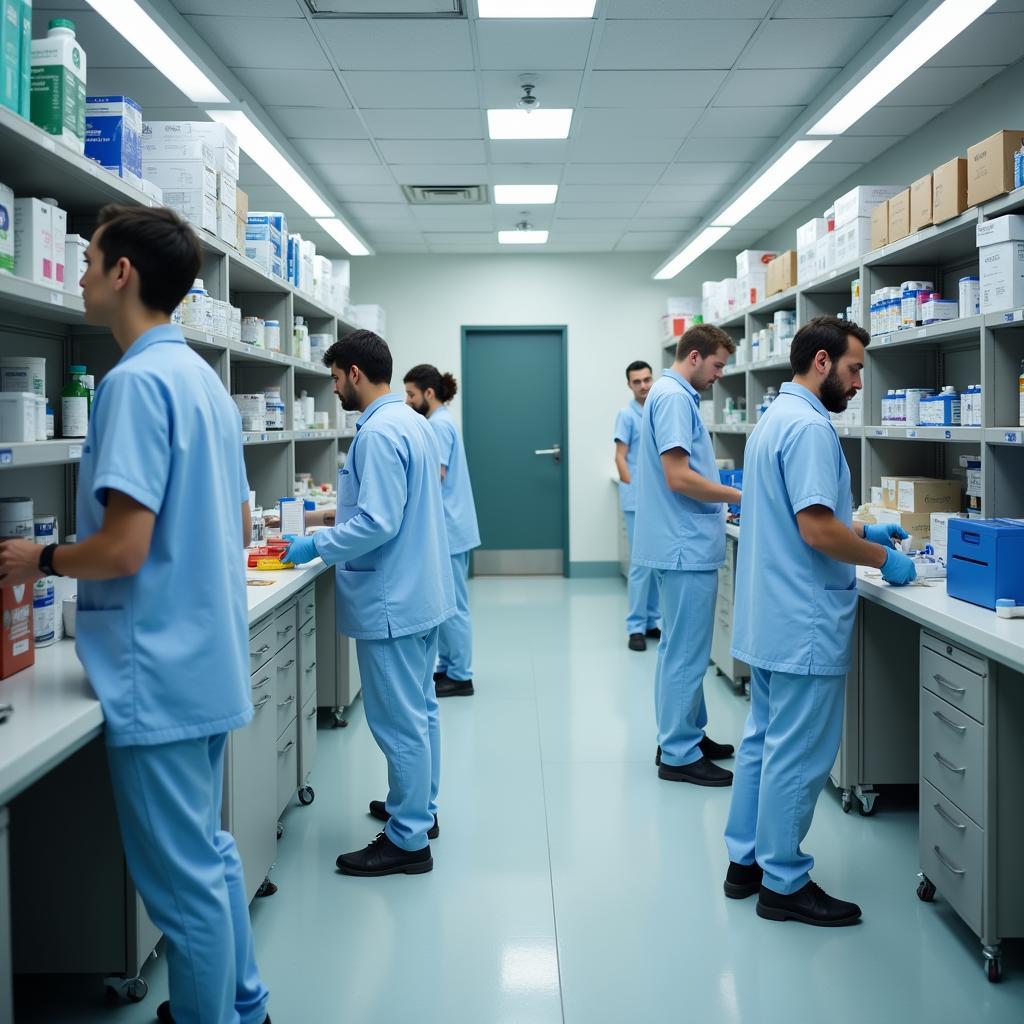The Cell Analogy Hospital is a powerful way to understand the complex workings of a hospital, comparing its various departments and functions to the organelles within a cell. This analogy helps illustrate how each part contributes to the overall health and efficiency of the whole, just like in a living organism.
The Nucleus: Hospital Administration
Like the nucleus, which controls cell activities, the hospital administration directs all operations. They are responsible for strategic planning, resource allocation, and ensuring the smooth functioning of all departments. This leadership is vital for maintaining order and efficiency within the complex hospital environment.
The Cell Membrane: Hospital Security and Reception
Just as the cell membrane regulates what enters and exits a cell, hospital security and reception control access to the facility. They maintain a safe and secure environment for patients, staff, and visitors. This first point of contact is crucial for managing flow and ensuring a welcoming atmosphere.
The Mitochondria: Hospital Power Generators
The mitochondria are the powerhouses of the cell, generating energy. In a hospital, the power generators fulfill this role, providing the electricity needed to operate life-saving equipment and maintain essential services. Without a reliable power source, a hospital cannot function effectively.
The Endoplasmic Reticulum: Hospital Corridors and Transport Systems
The endoplasmic reticulum transports materials within the cell. In a hospital, the corridors and various transport systems, like elevators and pneumatic tubes, facilitate the movement of patients, staff, equipment, and supplies throughout the facility. Efficient transport is essential for timely care and smooth operations.
The Golgi Apparatus: Hospital Pharmacy and Supply Chain
The Golgi apparatus processes and packages proteins in a cell. Similarly, the hospital pharmacy prepares and dispenses medications, while the supply chain manages and distributes essential medical supplies throughout the hospital. This ensures that necessary resources reach the right places at the right time.
 Hospital Pharmacy as Golgi Apparatus: Processing and Distributing Essential Supplies
Hospital Pharmacy as Golgi Apparatus: Processing and Distributing Essential Supplies
The Lysosomes: Hospital Waste Management
Lysosomes break down waste materials within the cell. In a hospital, the waste management department performs this crucial function, disposing of medical waste safely and responsibly to maintain a hygienic environment and prevent the spread of infection.
The Ribosomes: Hospital Operating Rooms and Treatment Areas
Ribosomes are the protein synthesis centers of the cell. In a hospital, the operating rooms and treatment areas are where medical interventions and procedures take place, representing the “building” or “repairing” functions of the hospital. These areas are crucial for patient care and recovery.
What are the Key Differences Between a Cell and a Hospital?
While the cell analogy is helpful, it’s important to note that a hospital is far more complex than a single cell. A hospital involves intricate human interactions, ethical considerations, and advanced technologies that go beyond the scope of a simple cell.
How Does the Cell Analogy Help in Hospital Design?
The cell analogy can inform hospital design by emphasizing the importance of efficient flow, clear communication, and interconnectedness between departments. Understanding these relationships can lead to more effective and patient-centered hospital layouts.
Conclusion: The Cell Analogy as a Tool for Understanding
The cell analogy hospital provides a valuable framework for understanding the complex interplay of departments within a hospital. By comparing each part to a cellular component, we gain a deeper appreciation for the coordinated effort required to deliver quality healthcare. Understanding this analogy can lead to improvements in efficiency, communication, and ultimately, patient care.
FAQ
- What is the main purpose of the cell analogy for hospitals?
- How does the nucleus compare to hospital administration?
- What hospital department is analogous to the mitochondria?
- Why is the cell membrane comparison relevant to hospital security?
- How does the cell analogy contribute to understanding hospital design?
Common Scenarios and Questions
-
Scenario: A patient wants to understand how the different departments in the hospital work together.
-
Question: Can you explain how the hospital functions as a whole?
-
Scenario: A student is researching hospital organization.
-
Question: What are the key departments in a hospital and their roles?
Further Exploration
For more information on San Jose Hospital’s specific departments and services, please visit our website’s other pages dedicated to each area.
Contact Us
Need assistance? Contact us 24/7 at Phone Number: 02437655121, Email: [email protected] or visit us at 298 Cau Dien St., Minh Khai Ward, Bac Tu Liem District, Hanoi, Vietnam.